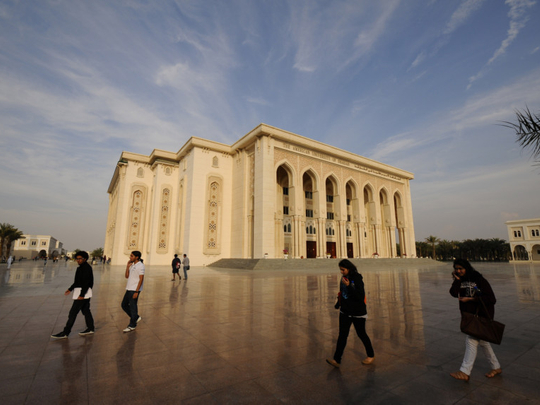
In 1677 English politician and collector Elias Ashmole donated his encyclopedic collection known as a cabinet of curiosities that included geological and zoological specimens along with engravings, books and coins to Oxford University, thus planting the seed for the world’s first university museum. In 1908 the institution was renamed the Ashmolean Museum of Art and Archaeology and has since expanded to include major works of art such as antiques, paintings and sculptures.
Outside Britain, university museums include those in Harvard, with collections exceeding 250,000 works as well as dozens others in the US. In India, the Asutosh Museum of Indian Art established in 1937 by the University of Calcutta in the city of Kolkata is renowned for its collection of regional East Indian art and antiquity. In South Africa, the Stellenbosch University Museum now houses items from the Apartheid era such as a plaque that once commemorated the architect of apartheid, H.F. Verwoerd, since stripped from the University’s Accounting and Statistics Building and placed in the university museum “to be properly contextualised.”
Whatever their cause, university museums the world over are now playing an increasingly important role in the cultural and academic spheres, especially where major museums have not stepped up to the fore. They are basically filling in a gap that only smaller, more agile institutions can perform while maintaining stronger links to the local community that is often overseen by major independent museums. Finally these university museums are today regarded as essential components of the academic and learning environment and contribute to these universities becoming major centres for learning and research as they provide first hand learning and research possibilities and can therefore contribute to their recognition and rankings as major centres of learning and research.
Today three UAE based universities rank in the top 500 in the world according to Quacquarelli Symonds World University Rankings. These include the American University of Sharjah (AUS), United Arab Emirates University and Khalifa University. AUS is now embarking on a mission to become the leading research university in the Arab world within five years and has announced four new interdisciplinary PhD-granting research institutes. Furthermore the UAE University has set itself a goal of becoming a top 200 world university. In fact it has made significant strides over the past two years jumping 40 places to 350 in the 2019 QS World University Rankings. In order to compliment and even offer a boost to these efforts, major UAE universities including UAE University and AUS should consider investing in the establishment of university museums.
The first step would be for these museums to sign memorandums of associations with universities in their cities and even across the country in order to expand cooperation and allow for the students to play greater roles in curating and proposing changes to these museum displays as well as academic research into the museums’ holdings. Indeed there is no shortage of ambition as the UAE has invested significantly in establishing museums even before its establishment from the Al Ain National Museum which was founded on November 2, 1971 (exactly one month before the UAE was announced), to the Sharjah Art Museum which was founded in 1997, Etihad Museum (founded 2016) and the Louvre Abu Dhabi (2017). The closest the UAE has to a university museum is the NYUAD Art Gallery, although its mandate is to mount temporary exhibitions rather than long term displays. Just like in other countries, UAE based corporations and businessmen and women can play a role in raising funds for these university museums or university galleries. In 2017 the Barjeel Art Foundation concluded three exhibitions with major American university museums beginning with Modern Art from the Middle East, an exhibition of modern art from the Arab world that took place at the Yale University Art Gallery (the world’s first ever university art museum founded in 1831-32). The second exhibition was ‘No To The Invasion: Breakdowns And Side Effects’ that took place at the CCS Bard galleries in the Hessel Museum of Art at Bard College. The third and final exhibition titled ‘Between two rounds of fire, the exile of the sea’ took place at the Katzen Art Centre in the American University Museum.
In mounting these shows we found that these university museums in addition to being more receptive to proposals for exhibitions that centre around non-Western art were also more willing to allow younger, less established academics and practitioners to curate exhibitions. Finally and perhaps most importantly we found that these university museums enjoy an advantage over their more renowned counterparts, namely the academic environment — from faculty professors and scholars to students and researchers. These advantages were especially manifested during the symposia that accompanied these exhibitions that had a strong student presence.
Four years ago a representative from a major university in the UAE approached me to gift the university certain artworks from the Barjeel collection. “Certainly,” I said, “as soon as you announce an initiative to establish a museum on the grounds of the university I will donate the works you requested.” I am still waiting to hear back from the representative.
Sultan Sooud Al Qassemi is a UAE-based writer.









